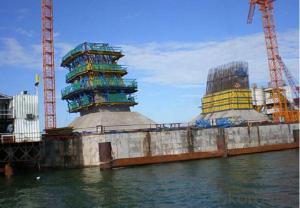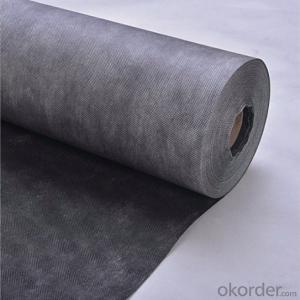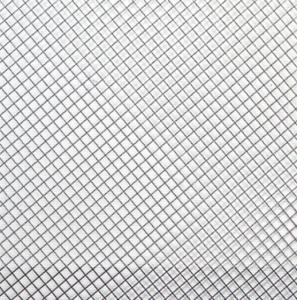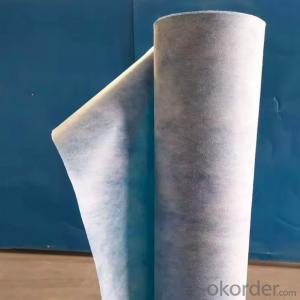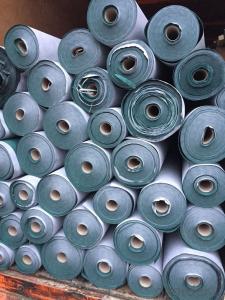Auto Climbing bracket ACB-100 for formwork and scaffolding system
- Loading Port:
- Tianjin
- Payment Terms:
- TT OR LC
- Min Order Qty:
- 50 m²
- Supply Capability:
- 1000 m²/month
OKorder Service Pledge
OKorder Financial Service
You Might Also Like
Auto-climbing Bracket ACB100 & ACB50
The power of the auto-climbing formwork is the hydraulic system, which includes the oil cylinder
and two commutators. The commutators can control the climbing of climbing rail and the bracket.
The steel rail and the bracket can inter-climbing, so the whole system will climb up steadily.
Cranes are not needed during the construction. It’s easy to operate, highly efficient and safe. It’s
the best choice for the construction of high buildings and bridges.
There are mainly two types of standard auto-climbing brackets, ACB-50 and ACB-100, the figure
means the push power of cylinder with unit of KN.
Characteristics:
◆ Perfect load bearing anchor system
Anchor system is the most important supporting part. The system is made of five parts shown
below. Thereinto, tensile bolt, V-climbing cone and washer can be taken out for reusing after the
concrete pouring finished.There are two kinds of anchor systems,A & B. A is matched with single
anchor shoe and B is matched with double anchor shoe.
◆ Crane-independent
Crane-independent forming, striking and climbing speeds up the work procedures on the
construction site and also makes them independent of each other. This means the planned
sequences can be maintained along with guaranteeing high productivity levels. The crane can
therefore be used for other tasks.
Hydraulic system is mainly made of two commutators,
oil cylinder and power distribution system.The
commutators can control the climbing of climbing rail
and bracket.
◆ High bearing capacity and safe
The stable working platforms are able to carry large loads, e.g. the storage of reinforcing steel
for the next climbing section. Generously-sized working platforms, the well thought-out design for
handling very high wind loads and the patented control function of the climbing mechanism are
some of the special details contained within the comprehensive safety concept.
◆ Platforms adjusted to suit the angle of inclination
The horizontal working areas thus created provide safe and comfortable conditions for
reinforcement work, shuttering and striking, concreting and finishing.
◆ The ACB formwork system can climb not only vertically but also slantways, the largest angle is
18 degrees.
◆ The system can climb up wholly or separately. The climbing process is steady, synchronous
and safe.
◆ The bracket will not fall to the ground until the construction is finished, the field will be saved
and the impacting breakage will be reduced (especially the panel).
◆ The system will furnish omnidirectional platform, the construction organizations don’t need to
set up additional operation platform.
◆ The error of structure construction is small and easy to correct.
◆ The climbing speed is fast, the construction course will be quickened.
◆ The formwork can climb itself and cleaning work can be done in the same situs , the used times
of tower crane will be greatly reduced.
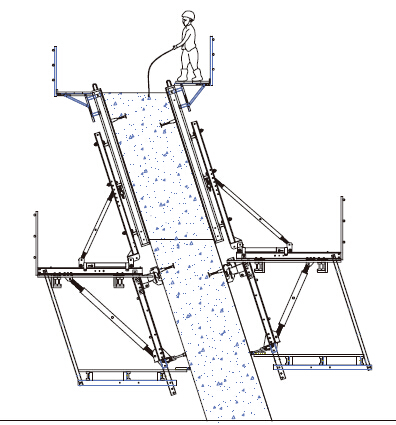
- Q:Can steel formwork be used in cold weather conditions?
- Yes, steel formwork can be used in cold weather conditions. Steel is a durable and strong material that can withstand extreme temperatures. However, it is important to consider the potential effects of cold weather on the construction process and the performance of the formwork. In cold weather, the most significant concern is the possibility of freezing temperatures affecting the setting and curing of the concrete. This can cause delays in the construction schedule and affect the quality of the concrete. To address this issue, several measures can be taken when using steel formwork in cold weather conditions. Firstly, it is important to ensure that the formwork is properly insulated to prevent heat loss and maintain the required temperature for the concrete. This can be achieved by using insulating materials such as polystyrene or foam boards around the formwork. Secondly, heating devices such as electric blankets or heat lamps can be used to maintain the desired temperature during the curing process. These devices should be placed strategically to provide uniform heat distribution without damaging the steel formwork. Additionally, it is crucial to plan the construction schedule carefully, taking into account the weather forecast and avoiding pouring concrete during extremely cold periods. Cold weather concreting techniques, such as using accelerators or special admixtures, can also help to increase the rate of concrete setting and prevent freezing. Overall, while steel formwork can be used in cold weather conditions, proper precautions must be taken to ensure the successful completion of the construction project. Adequate insulation, heating devices, and careful scheduling are essential to mitigate the potential challenges posed by cold weather on the performance of the formwork and the quality of the concrete.
- Q:How does steel formwork affect the overall durability of the structure?
- The overall durability of a structure can be greatly influenced by the use of steel formwork. Steel, known for its strength and durability, is an ideal material for formwork. One of the main ways in which steel formwork impacts the durability of a structure is by its ability to withstand the forces and pressures exerted during construction. Steel formwork provides exceptional support and stability to the concrete during pouring and curing, ensuring that it maintains its shape and strength. This helps prevent any deformation or cracking that could compromise the overall durability of the structure. Moreover, steel formwork is highly resistant to wear and tear, which is crucial for projects involving multiple concrete pours. Unlike other formwork materials like timber, steel formwork does not warp, shrink, or expand due to moisture or temperature changes. This allows for multiple uses and reuses, reducing the need for frequent replacements and ultimately increasing the lifespan of the structure. Additionally, steel formwork offers superior protection against environmental factors such as corrosion and fire. Steel naturally resists rust and decay, significantly extending the lifespan of the formwork and consequently the structure itself. Furthermore, steel formwork provides higher fire resistance compared to other materials, reducing the risk of structural damage and enhancing the overall durability of the building. In conclusion, the use of steel formwork has a positive impact on the overall durability of a structure. Its excellent support, stability, and protection against various forces and environmental factors make it a reliable choice for construction projects, ensuring the longevity and durability of the structure.
- Q:Can steel formwork be used for staircase construction?
- Yes, steel formwork can be used for staircase construction. Steel formwork provides strength, durability, and stability, making it suitable for constructing staircases. It offers a smooth finish and allows for precise shaping and customization to meet specific design requirements. Additionally, steel formwork can be easily dismantled, reused, and adjusted, making it a cost-effective option for staircase construction.
- Q:What are the typical environmental considerations when using steel formwork?
- Some typical environmental considerations when using steel formwork include the impact of steel production on carbon emissions, the potential for steel to be recycled and reused, the use of non-toxic coatings and sealants to minimize environmental pollution, and the proper disposal or recycling of steel formwork at the end of its lifespan.
- Q:Can steel formwork be used in areas with high humidity?
- Yes, steel formwork can be used in areas with high humidity. Steel is a durable material that is not easily affected by moisture or humidity. It does not absorb water like wood and does not warp, swell, or rot when exposed to high humidity levels. Steel formwork also has a smooth surface that prevents the formation of mold or mildew. However, it is important to ensure proper surface protection and maintenance to prevent any corrosion due to prolonged exposure to high humidity. Regular cleaning and applying protective coatings can help extend the lifespan of steel formwork in areas with high humidity.
- Q:What are the common challenges associated with steel formwork?
- Construction projects face several common challenges when it comes to steel formwork. One of the main obstacles is the high initial cost associated with purchasing or renting steel formwork compared to other materials like wood or plastic. Although steel formwork is more durable and has a longer lifespan, smaller construction companies or projects with limited budgets may find the upfront investment prohibitive. Another issue is the weight and handling of steel formwork. Due to its heaviness, transporting, assembling, and dismantling steel formwork on-site can be challenging. This may necessitate additional labor and equipment, leading to increased construction costs. Proper installation and alignment of steel formwork also require skilled labor. Achieving the desired dimensions and finishes of concrete structures relies heavily on the accuracy and precision of the formwork. Mistakes or misalignments during setup can result in costly rework or compromised structural integrity. Maintenance and storage of steel formwork pose their own challenges. Regular cleaning and treatment are necessary to prevent rust and corrosion, particularly in humid or coastal areas. Sufficient storage space is also essential for protecting the formwork from external elements when not in use. Lastly, customization and adaptability can prove challenging with steel formwork. Unlike wood formwork, which can be cut and shaped on-site, steel formwork requires prefabrication and customization before use. Any changes in design or dimensions during the construction process may require additional time and cost to modify or replace the steel formwork components. Despite these challenges, steel formwork offers numerous advantages, including durability, reusability, and high-quality finishes. By implementing proper planning, training, and maintenance, these challenges can be effectively managed to ensure the success of construction projects.
- Q:How does steel formwork prevent concrete segregation during pouring?
- To prevent concrete segregation during pouring, steel formwork offers a rigid and stable structure that securely holds the concrete in place. The steel panels are engineered to possess strength and durability, guaranteeing that they maintain their shape and do not bend or flex under the weight and pressure of the concrete. This effectively prevents the concrete from separating and segregating, an issue that arises when the formwork lacks sturdiness. Moreover, steel formwork is designed with tight connections and joints, effectively reducing the chances of any leakage. This is crucial because if water from the concrete mixture leaks out, it can lead to the separation and settling of aggregates, causing segregation. Therefore, the tight connections and joints contribute to maintaining the desired shape and dimensions of the concrete structure. Additionally, steel formwork is often treated or coated to prevent any chemical reactions between the concrete and the steel. This is of utmost importance as such reactions can result in concrete segregation and gradual weakening over time. Through the provision of a strong and stable framework, prevention of leakage, and avoidance of chemical reactions, steel formwork ensures that the concrete mixture remains homogeneous and properly integrated, effectively preventing segregation during pouring.
- Q:What are the common safety certifications required for steel formwork?
- The common safety certifications required for steel formwork include certifications related to structural integrity, load-bearing capacity, fire resistance, and worker safety. Some of the commonly required certifications include ISO 9001:2015 for quality management systems, ISO 3834-2 for welding quality requirements, EN 12812 for temporary works equipment, and OSHA regulations for worker safety. These certifications ensure that the steel formwork meets industry standards and is safe to use in construction projects.
- Q:What are the different safety guidelines for dismantling steel formwork?
- When dismantling steel formwork, it is important to follow certain safety guidelines to ensure the well-being of workers and prevent accidents. Some of the key safety guidelines include: 1. Adequate training: Workers involved in dismantling steel formwork should be properly trained in the safe dismantling procedures. They should be familiar with the equipment and tools used and understand the potential hazards associated with the task. 2. Personal protective equipment (PPE): All workers must wear appropriate PPE, including hard hats, safety glasses, gloves, and steel-toed boots, to protect themselves from falling objects, sharp edges, and other potential hazards. 3. Secure the area: Before starting the dismantling process, the work area should be properly secured and cordoned off to prevent unauthorized access. Warning signs and barriers should be placed to alert others about the ongoing work. 4. Inspection of equipment: The steel formwork and associated equipment should be inspected for any damage or defects before dismantling. Any faulty equipment should be repaired or replaced to ensure safe dismantling. 5. Proper tools and equipment: Use the correct tools and equipment for dismantling, such as wrenches, hammers, and cutting tools. Ensure that they are in good working condition and used correctly to avoid accidents. 6. Controlled dismantling: Dismantle the steel formwork in a controlled manner, starting from the top and working downwards. Avoid sudden movements or actions that may cause parts to fall or collapse. 7. Fall protection: Implement appropriate fall protection measures, such as safety harnesses and lanyards, when working at heights. Install guardrails or safety nets to minimize the risk of falls. 8. Communication and coordination: Maintain clear communication among workers involved in the dismantling process to ensure everyone is aware of the ongoing activities and potential hazards. Coordinate the work to avoid any conflicts or accidents. 9. Safe handling and disposal: When removing steel formwork components, ensure proper lifting techniques are used to avoid strains or injuries. Dispose of dismantled materials safely and responsibly, following local regulations. 10. Regular inspections: Regularly inspect the dismantled formwork components, storage areas, and tools to identify any potential safety hazards and address them promptly. It is crucial to prioritize safety during the dismantling process of steel formwork to prevent injuries, accidents, and damage to property.
- Q:Can steel formwork be used for both residential and commercial construction projects?
- Yes, steel formwork can be used for both residential and commercial construction projects. Steel formwork is a versatile and durable option for creating concrete structures, including walls, columns, beams, and slabs. It offers several advantages such as high load-bearing capacity, dimensional accuracy, and reusability, making it suitable for various construction projects. In residential construction, steel formwork can be used for building foundations, retaining walls, and even for creating decorative elements. In commercial projects, it can be used for constructing office buildings, shopping malls, industrial facilities, and other large-scale structures. Additionally, steel formwork allows for faster construction and better quality control, resulting in time and cost savings for both residential and commercial projects.
1. Manufacturer Overview |
|
|---|---|
| Location | |
| Year Established | |
| Annual Output Value | |
| Main Markets | |
| Company Certifications | |
2. Manufacturer Certificates |
|
|---|---|
| a) Certification Name | |
| Range | |
| Reference | |
| Validity Period | |
3. Manufacturer Capability |
|
|---|---|
| a)Trade Capacity | |
| Nearest Port | |
| Export Percentage | |
| No.of Employees in Trade Department | |
| Language Spoken: | |
| b)Factory Information | |
| Factory Size: | |
| No. of Production Lines | |
| Contract Manufacturing | |
| Product Price Range | |
Send your message to us
Auto Climbing bracket ACB-100 for formwork and scaffolding system
- Loading Port:
- Tianjin
- Payment Terms:
- TT OR LC
- Min Order Qty:
- 50 m²
- Supply Capability:
- 1000 m²/month
OKorder Service Pledge
OKorder Financial Service
Similar products
New products
Hot products
Hot Searches

